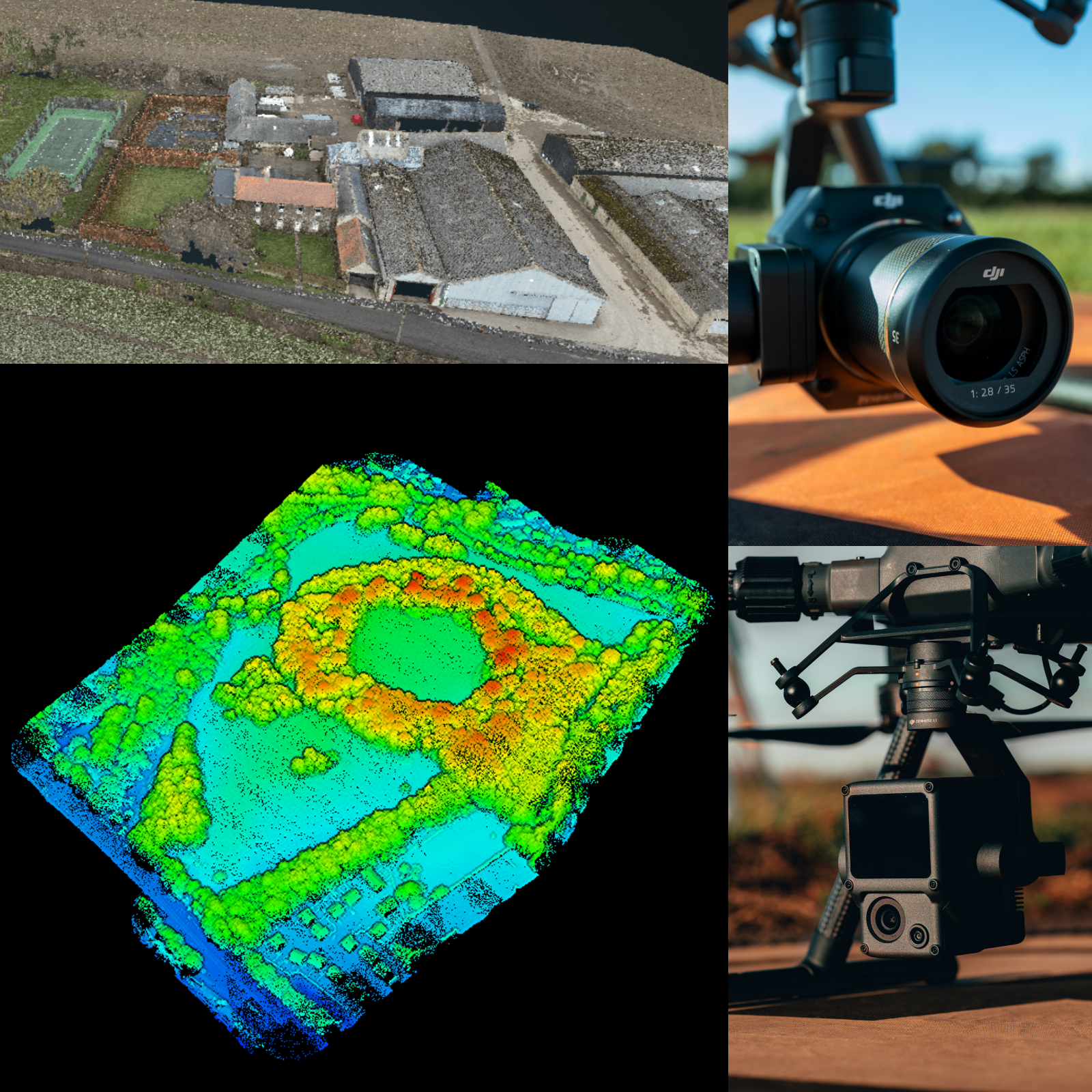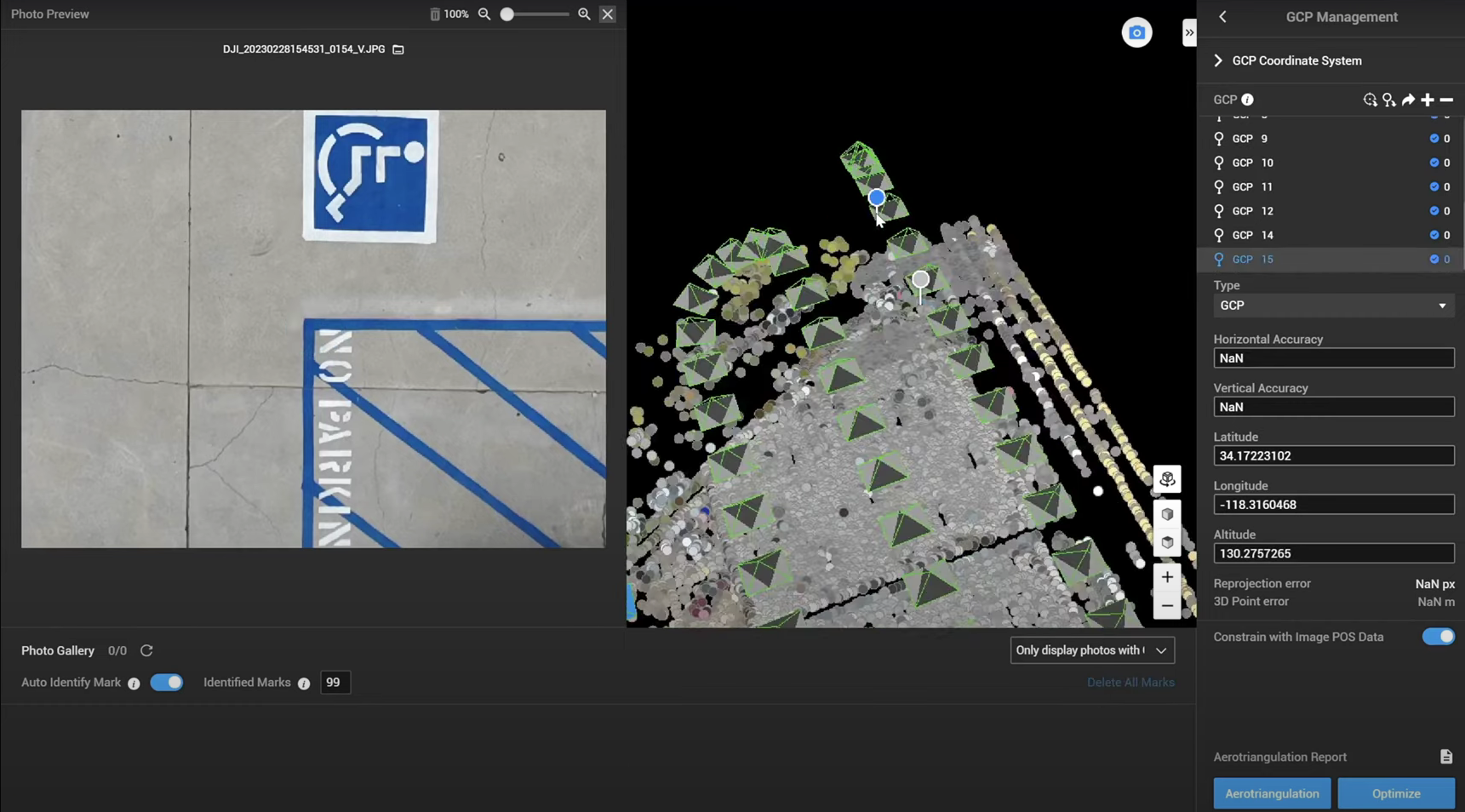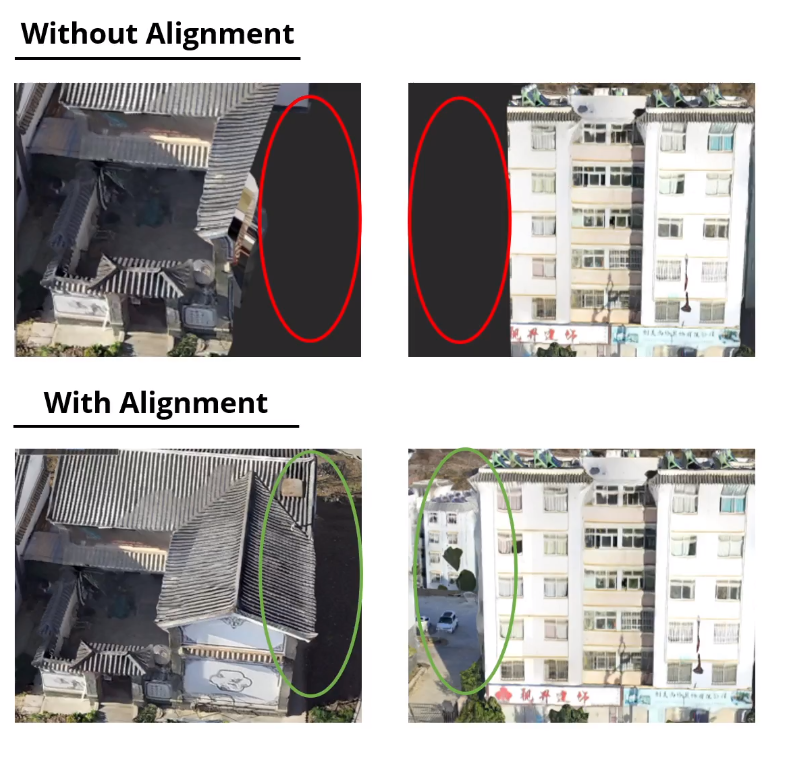
Products
DJI Terra Firmware Update: Automatic GCP Marking, LiDAR Ground Classification, And Model Size Reduction
Comprehensive guide to the new features in DJI Terra. Firmware upgrade V3.7.0 brings with it automatic GCP marking, ground classification for LiDAR data, and a feature to reduce model sizes for shorter loading times. This update improves wo ... Read More

New firmware update for DJI Terra adds important functionality to improve the data processing workflow of photogrammetry and LiDAR data;
Automatic Ground Control Point marking is more than 90% quicker than conducting the process manually;
Terra now enables automatic LiDAR ground classification, in preparation for DEM generation;
Auto align blocks for 3D reconstruction to avoid misalignment issues;
Reduce the size of a 3D model for shorter loading times. In one example, a 6.5GB file was reduced to 3.3GB, cutting the loading time by 60%.
New tools have been added to DJI Terra to enhance and streamline the workflow of processing drone photogrammetry and LiDAR data.
Key new features added as part of the recent 3.7.0 firmware update include:
Automatically mark Ground Control Points (GCPs). This can speed up the process by more than 90%, compared to manually marking each image associated to every GCP in a data set.
Automatically classify ground points with LiDAR data and then input to third-party software for DEM (Digital Elevation Model) generation.
Auto Align Blocks for 3D reconstruction: Update specific areas of the data set without misalignment between the updated data and original data.
Reduce the size of a model by 50% to improve loading and frame-rate speeds. In one example, the file was reduced from a size of 6.5GB to 3.3GB, cutting the loading time by 60%.
Enhanced Quality Report, improving the efficiency and experience of quality control and data management.
In this blog, we'll take a look at each of these new features in detail, highlighting how they benefit processing data collected with solutions such as the P1 photogrammetry camera and the L1 LiDAR/photogrammetry payload - both of which are deployed with the DJI M300 Series drones.
For an overview of the DJI Terra software, including examples data sets, read our Drone Mapping With DJI Terra blog.
DJI Terra: Auto Identify Ground Control Points
Marking GCPs or Check Points in a data set when processing drone survey photogrammetry data is crucial for georeferencing, accuracy assessment, alignment, reliability, and enabling effective analysis.
And DJI Terra now features automatic GCP marking. This enables users to manually tie the GCP or check point once, and Terra will then automatically mark the corresponding GCP in other photos from different angles collected during the survey.

This saves a lot of time marking ground control points and check points manually - especially when a project contains many GCPs/check points.
For instance, these two tables show the vast efficiency improvements of using the auto identify mark feature.
The first example is based on a 2D mapping project over 11,120 acres - and shows how the auto identify feature results in a time-saving of 91%.
Manual Mark | Auto Identify Feature | |
Number of GCPs | 30 | 30 |
Number of photos marked for each GCP | 10 | 12 |
Time to complete | 53 minutes | 5 minutes |
And this second example demonstrates how the new feature increases the efficiency of marking GCPs by 94% in a 3D mapping project over 3,700 acres.
Manual Mark | Auto Identify Feature | |
Number of GCPs | 100 | 100 |
Number of photos marked for each GCP | 20 | 32 |
Time to complete | 5 hours 30 minutes | 20 minutes |
DJI Terra: Automatic GCP Marking - Workflow
So, how do you conduct this workflow during the data processing?
Read our in-depth workflow guide, which details how DJI Terra can mark GCP targets and non-target-specific GCPs.
DJI Terra: LiDAR Point Cloud Ground Classification
The firmware update provides the ability to conduct ground classification with LiDAR data.
This enables the classification of the ground/bare earth ready for upload into third-party software for DEM generation. Read our DEM vs DTM vs DSM blog for more details about tis type of model.
Classifying ground in a point cloud is essential for creating a robust DEM, helping to provide an accurate representation of the terrain and removes non-ground features.
Click here to learn the new classification workflow for LiDAR Ground Points.
DJI Terra: Automatic 3D Block Alignment
Block alignment in processing drone survey data ensures that the collected data is accurately referenced, integrated, and ready for further analysis and interpretation. It helps minimise errors, enhances the reliability of the survey results, and eliminates distortion, errors, or duplicate/missing data.
For instance, look at the comparison in these data sets with and without block alignment.

As such, DJI Terra now enables automatic 3D block alignment.
ln some 3D model update projects, only part of the entire area needs to be updated. This new functionality ensures that specific areas are updated without misalignment between the updated data and the original data.
It also provides more data for alignment purposes.
Learn how to conduct automatic 3D block alignment in DJI Terra.
3D Model Size Reduction
DJI Terra now provides the option to reduce the size of a photogrammetry model by 50%.
This size-reduction function cuts the number of triangle meshes within the model, reducing the loading speed to view it.
For instance, the table below shows the value of reducing the size of a 3D model when it comes to speed of viewing the data set.
100% Original Model | Reduce To 50% | |
File Size | 6.5GB | 3.3GB |
Loading Time | 40s in FlightHub 2 | 15s in FlightHub 2 |
Frame Rate | 16-20fps | 35-40fps |
The table statistics are based on a data set which has been created using data from the Zenmuse P1 across a site of 247 acres.
It shows that reducing the model by 50% cuts the loading time by 60%, and speeds up the frame rate by 100% .
However, there are some caveats.
Firstly, while this process cuts the loading time to view the model, it does not reduce the processing time.
Secondly, reducing the model size does result in some detail being lost.
For high-precession mapping scenarios, it is recommended to have Terra output the maximum number of triangles in the mesh model and keep the size of the model at 100%.
New Quality Report Feature
DJI Terra V3.7.0 brings with it a more comprehensive and readable Quality Report, greatly improving the efficiency and experience of quality control, data management, and problem data troubleshooting.
Now you can:
Add Flight Parameters: Add flight parameters to better evaluate data quality.
Add GCP Information: More detailed GCP and check point information.
Camera Residual: Camera residual image for more intuitive viewing.
POS Residual Data: More detailed data for aerial-triangulation.
DJI Terra New Firmware Update: Summary
DJI Terra was already a comprehensive software, especially for processing data collected with the P1 and L1 payloads.
Indeed, since launching Terra in 2019, DJI has continued to evolve the platform to ensure it can handle the demands of modern-day drone surveying.
But the recent launch of the V3.7.0 firmware feels like a substantial upgrade, adding extra functionality to an already robust platform.
Features such as automatic GCP marking and LiDAR ground classification are extremely useful tools, while the model size-reduction feature has a part to play.
In essence, V3.7.0 provides Terra uses with a meaty upgrade which will enable the platform to better support its users.
heliguy™, a UK-based drone supply and support company, has an in-house surveying department. To discuss anything in this article or to find out more about starting or scaling your drone surveying programme, contact us. heliguy™ also runs an Aerial Surveying Training Course, which focuses on the fundamentals and principles of drone mapping and land surveying and covers photogrammetry and LiDAR workflows.
